Dario Pompili
Real-Time Navigation for Autonomous Aerial Vehicles Using Video
Apr 01, 2025Abstract:Most applications in autonomous navigation using mounted cameras rely on the construction and processing of geometric 3D point clouds, which is an expensive process. However, there is another simpler way to make a space navigable quickly: to use semantic information (e.g., traffic signs) to guide the agent. However, detecting and acting on semantic information involves Computer Vision~(CV) algorithms such as object detection, which themselves are demanding for agents such as aerial drones with limited onboard resources. To solve this problem, we introduce a novel Markov Decision Process~(MDP) framework to reduce the workload of these CV approaches. We apply our proposed framework to both feature-based and neural-network-based object-detection tasks, using open-loop and closed-loop simulations as well as hardware-in-the-loop emulations. These holistic tests show significant benefits in energy consumption and speed with only a limited loss in accuracy compared to models based on static features and neural networks.
Hierarchical in-Context Reinforcement Learning with Hindsight Modular Reflections for Planning
Aug 12, 2024Abstract:Large Language Models (LLMs) have demonstrated remarkable abilities in various language tasks, making them promising candidates for decision-making in robotics. Inspired by Hierarchical Reinforcement Learning (HRL), we propose Hierarchical in-Context Reinforcement Learning (HCRL), a novel framework that decomposes complex tasks into sub-tasks using an LLM-based high-level policy, in which a complex task is decomposed into sub-tasks by a high-level policy on-the-fly. The sub-tasks, defined by goals, are assigned to the low-level policy to complete. Once the LLM agent determines that the goal is finished, a new goal will be proposed. To improve the agent's performance in multi-episode execution, we propose Hindsight Modular Reflection (HMR), where, instead of reflecting on the full trajectory, we replace the task objective with intermediate goals and let the agent reflect on shorter trajectories to improve reflection efficiency. We evaluate the decision-making ability of the proposed HCRL in three benchmark environments--ALFWorld, Webshop, and HotpotQA. Results show that HCRL can achieve 9%, 42%, and 10% performance improvement in 5 episodes of execution over strong in-context learning baselines.
LLM-based Multi-Agent Reinforcement Learning: Current and Future Directions
May 17, 2024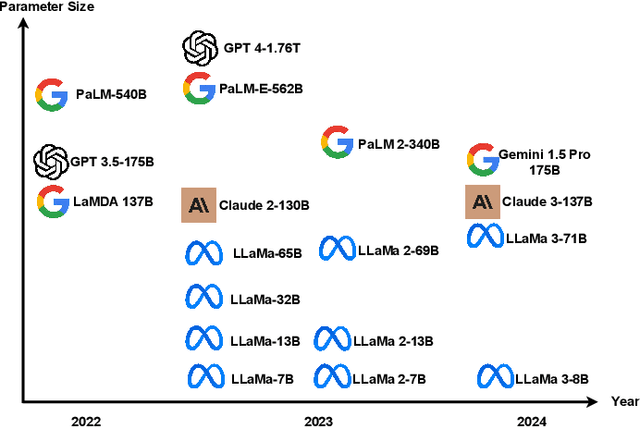
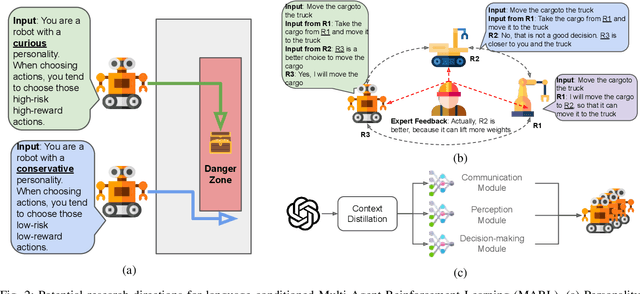

Abstract:In recent years, Large Language Models (LLMs) have shown great abilities in various tasks, including question answering, arithmetic problem solving, and poem writing, among others. Although research on LLM-as-an-agent has shown that LLM can be applied to Reinforcement Learning (RL) and achieve decent results, the extension of LLM-based RL to Multi-Agent System (MAS) is not trivial, as many aspects, such as coordination and communication between agents, are not considered in the RL frameworks of a single agent. To inspire more research on LLM-based MARL, in this letter, we survey the existing LLM-based single-agent and multi-agent RL frameworks and provide potential research directions for future research. In particular, we focus on the cooperative tasks of multiple agents with a common goal and communication among them. We also consider human-in/on-the-loop scenarios enabled by the language component in the framework.
Source Feature Compression for Object Classification in Vision-Based Underwater Robotics
Dec 28, 2021

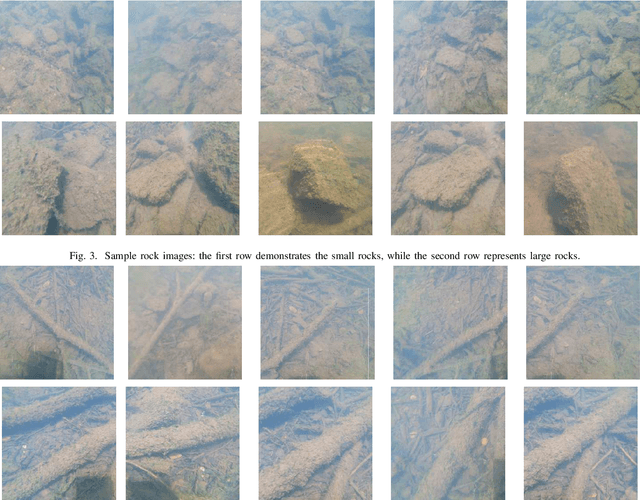

Abstract:New efficient source feature compression solutions are proposed based on a two-stage Walsh-Hadamard Transform (WHT) for Convolutional Neural Network (CNN)-based object classification in underwater robotics. The object images are firstly transformed by WHT following a two-stage process. The transform-domain tensors have large values concentrated in the upper left corner of the matrices in the RGB channels. By observing this property, the transform-domain matrix is partitioned into inner and outer regions. Consequently, two novel partitioning methods are proposed in this work: (i) fixing the size of inner and outer regions; and (ii) adjusting the size of inner and outer regions adaptively per image. The proposals are evaluated with an underwater object dataset captured from the Raritan River in New Jersey, USA. It is demonstrated and verified that the proposals reduce the training time effectively for learning-based underwater object classification task and increase the accuracy compared with the competing methods. The object classification is an essential part of a vision-based underwater robot that can sense the environment and navigate autonomously. Therefore, the proposed method is well-suited for efficient computer vision-based tasks in underwater robotics applications.
Configuration Learning in Underwater Optical Links
Aug 03, 2020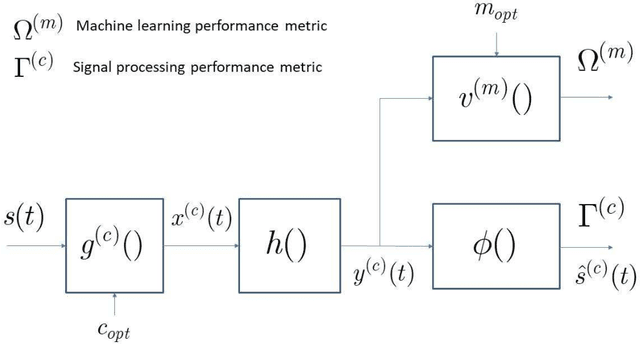
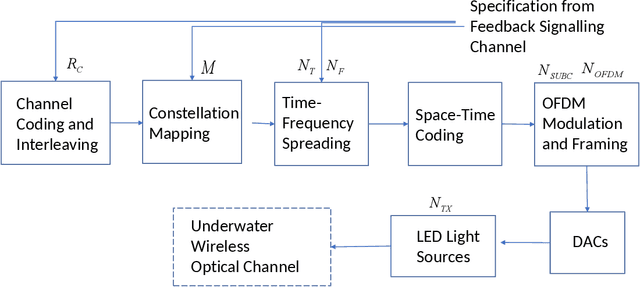
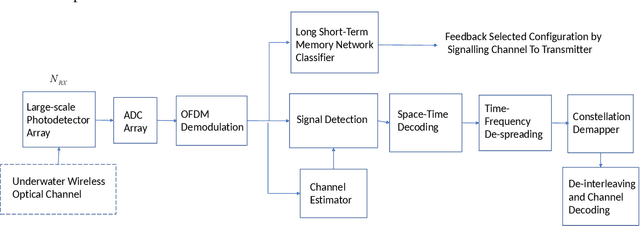

Abstract:A new research problem named configuration learning is described in this work. A novel algorithm is proposed to address the configuration learning problem. The configuration learning problem is defined to be the optimization of the Machine Learning (ML) classifier to maximize the ML performance metric optimizing the transmitter configuration in the signal processing/communication systems. Specifically, this configuration learning problem is investigated in an underwater optical communication system with signal processing performance metric of the physical-layer communication throughput. A novel algorithm is proposed to perform the configuration learning by alternating optimization of key design parameters and switching between several Recurrent Neural Network (RNN) classifiers dependant on the learning objective. The proposed ML algorithm is validated with the datasets of an underwater optical communication system and is compared with competing ML algorithms. Performance results indicate that the proposal outperforms the competing algorithms for binary and multi-class configuration learning in underwater optical communication datasets. The proposed configuration learning framework can be further investigated and applied to a broad range of topics in signal processing and communications.
On-board Deep-learning-based Unmanned Aerial Vehicle Fault Cause Detection and Identification
Apr 03, 2020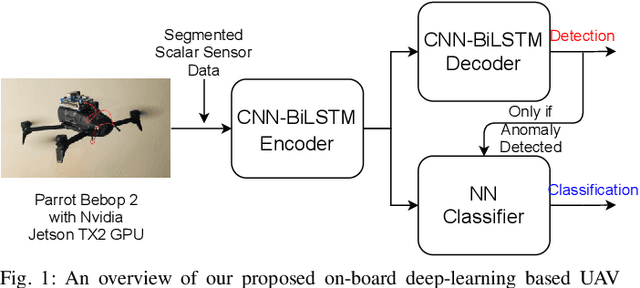
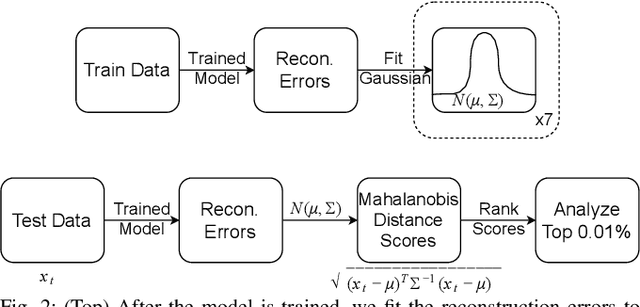
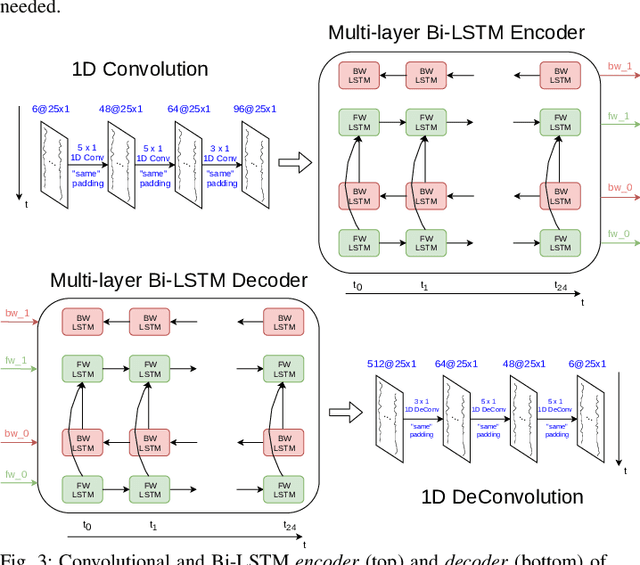

Abstract:With the increase in use of Unmanned Aerial Vehicles (UAVs)/drones, it is important to detect and identify causes of failure in real time for proper recovery from a potential crash-like scenario or post incident forensics analysis. The cause of crash could be either a fault in the sensor/actuator system, a physical damage/attack, or a cyber attack on the drone's software. In this paper, we propose novel architectures based on deep Convolutional and Long Short-Term Memory Neural Networks (CNNs and LSTMs) to detect (via Autoencoder) and classify drone mis-operations based on sensor data. The proposed architectures are able to learn high-level features automatically from the raw sensor data and learn the spatial and temporal dynamics in the sensor data. We validate the proposed deep-learning architectures via simulations and experiments on a real drone. Empirical results show that our solution is able to detect with over 90% accuracy and classify various types of drone mis-operations (with about 99% accuracy (simulation data) and upto 88% accuracy (experimental data)).
Transform-Domain Classification of Human Cells based on DNA Methylation Datasets
Dec 31, 2019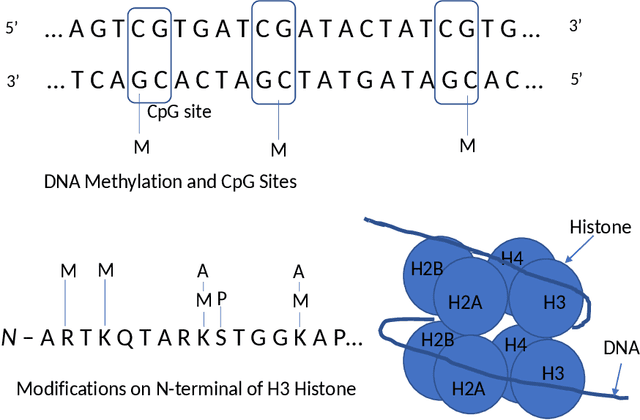
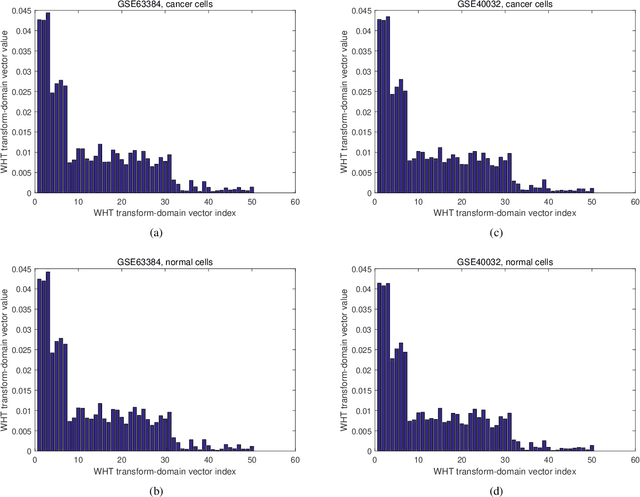


Abstract:A novel method to classify human cells is presented in this work based on the transform-domain method on DNA methylation data. DNA methylation profile variations are observed in human cells with the progression of disease stages, and the proposal is based on this DNA methylation variation to classify normal and disease cells including cancer cells. The cancer cell types investigated in this work cover hepatocellular (sample size n = 40), colorectal (n = 44), lung (n = 70) and endometrial (n = 87) cancer cells. A new pipeline is proposed integrating the DNA methylation intensity measurements on all the CpG islands by the transformation of Walsh-Hadamard Transform (WHT). The study reveals the three-step properties of the DNA methylation transform-domain data and the step values of association with the cell status. Further assessments have been carried out on the proposed machine learning pipeline to perform classification of the normal and cancer tissue cells. A number of machine learning classifiers are compared for whole sequence and WHT sequence classification based on public Whole-Genome Bisulfite Sequencing (WGBS) DNA methylation datasets. The WHT-based method can speed up the computation time by more than one order of magnitude compared with whole original sequence classification, while maintaining comparable classification accuracy by the selected machine learning classifiers. The proposed method has broad applications in expedited disease and normal human cell classifications by the epigenome and genome datasets.
Deep Multi-Task Learning for Anomalous Driving Detection Using CAN Bus Scalar Sensor Data
Jun 28, 2019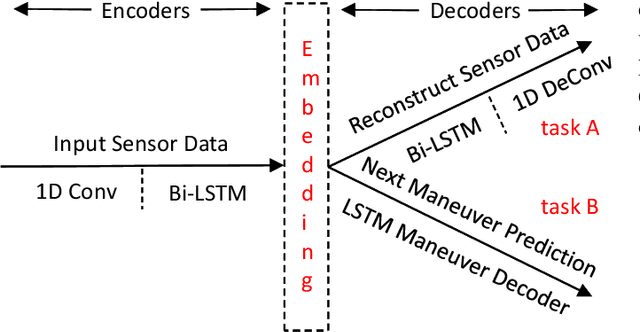
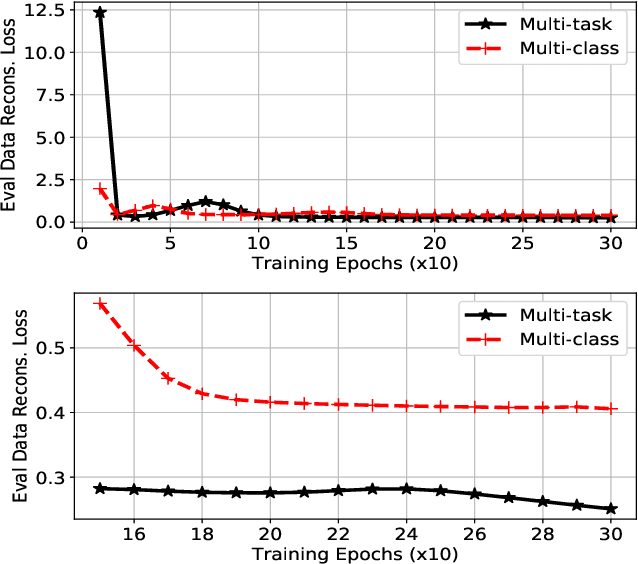

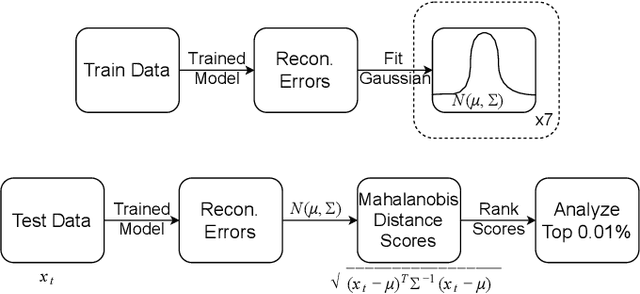
Abstract:Corner cases are the main bottlenecks when applying Artificial Intelligence (AI) systems to safety-critical applications. An AI system should be intelligent enough to detect such situations so that system developers can prepare for subsequent planning. In this paper, we propose semi-supervised anomaly detection considering the imbalance of normal situations. In particular, driving data consists of multiple positive/normal situations (e.g., right turn, going straight), some of which (e.g., U-turn) could be as rare as anomalous situations. Existing machine learning based anomaly detection approaches do not fare sufficiently well when applied to such imbalanced data. In this paper, we present a novel multi-task learning based approach that leverages domain-knowledge (maneuver labels) for anomaly detection in driving data. We evaluate the proposed approach both quantitatively and qualitatively on 150 hours of real-world driving data and show improved performance over baseline approaches.
* IROS 2019, 8 pages
HCFContext: Smartphone Context Inference via Sequential History-based Collaborative Filtering
Apr 29, 2019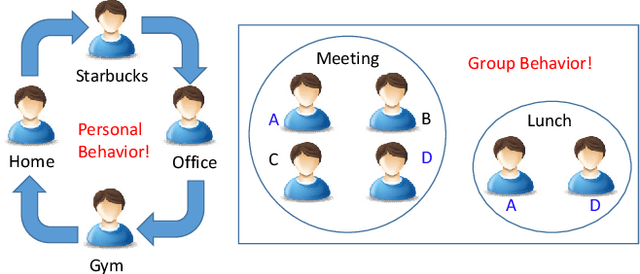
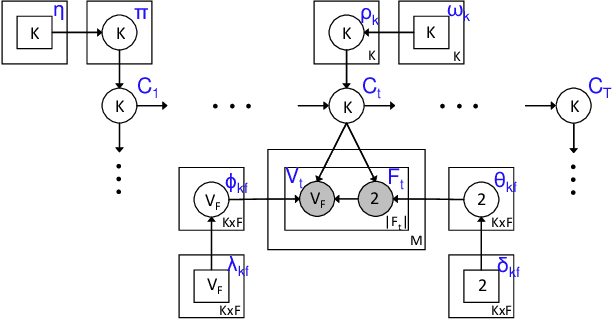
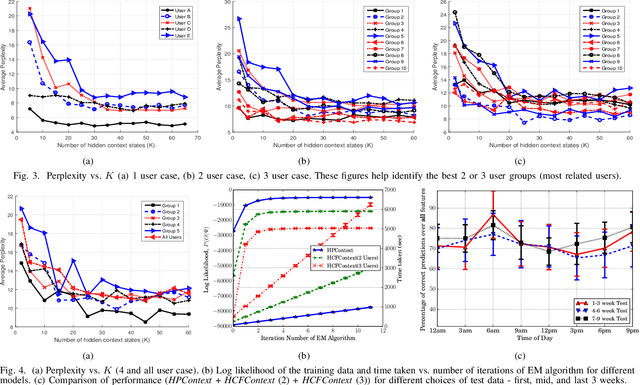
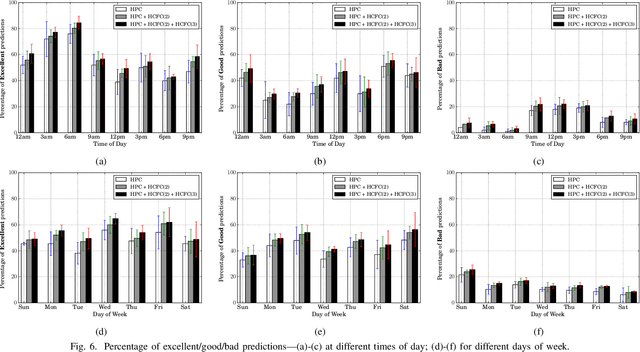
Abstract:Mobile context determination is an important step for many context aware services such as location-based services, enterprise policy enforcement, building or room occupancy detection for power or HVAC operation, etc. Especially in enterprise scenarios where policies (e.g., attending a confidential meeting only when the user is in "Location X") are defined based on mobile context, it is paramount to verify the accuracy of the mobile context. To this end, two stochastic models based on the theory of Hidden Markov Models (HMMs) to obtain mobile context are proposed-personalized model (HPContext) and collaborative filtering model (HCFContext). The former predicts the current context using sequential history of the user's past context observations, the latter enhances HPContext with collaborative filtering features, which enables it to predict the current context of the primary user based on the context observations of users related to the primary user, e.g., same team colleagues in company, gym friends, family members, etc. Each of the proposed models can also be used to enhance or complement the context obtained from sensors. Furthermore, since privacy is a concern in collaborative filtering, a privacy-preserving method is proposed to derive HCFContext model parameters based on the concepts of homomorphic encryption. Finally, these models are thoroughly validated on a real-life dataset.
* Mobile context, collaborative filtering, privacy-preserving, personalized model, sensors, location, prediction, hidden markov models, google now, apple siri, cortana, alexa
CollabLoc: Privacy-Preserving Multi-Modal Localization via Collaborative Information Fusion
Sep 29, 2017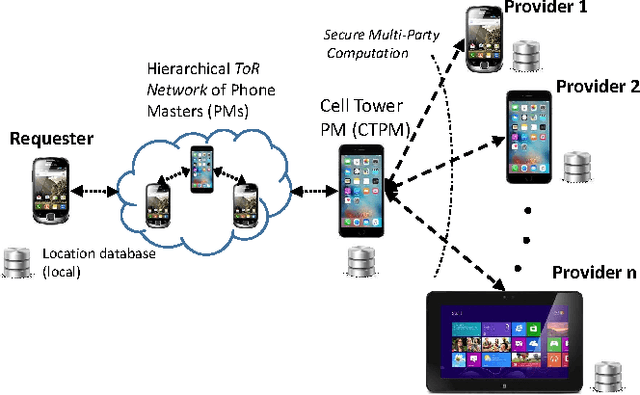
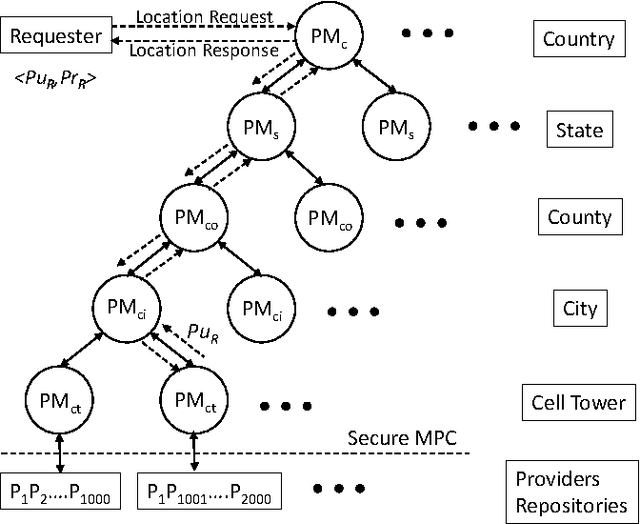
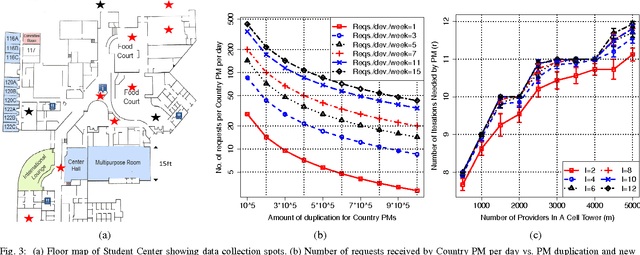
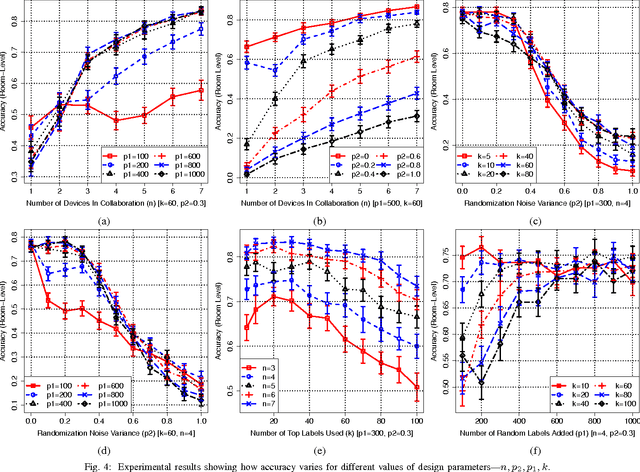
Abstract:Mobile phones provide an excellent opportunity for building context-aware applications. In particular, location-based services are important context-aware services that are more and more used for enforcing security policies, for supporting indoor room navigation, and for providing personalized assistance. However, a major problem still remains unaddressed---the lack of solutions that work across buildings while not using additional infrastructure and also accounting for privacy and reliability needs. In this paper, a privacy-preserving, multi-modal, cross-building, collaborative localization platform is proposed based on Wi-Fi RSSI (existing infrastructure), Cellular RSSI, sound and light levels, that enables room-level localization as main application (though sub room level granularity is possible). The privacy is inherently built into the solution based on onion routing, and perturbation/randomization techniques, and exploits the idea of weighted collaboration to increase the reliability as well as to limit the effect of noisy devices (due to sensor noise/privacy). The proposed solution has been analyzed in terms of privacy, accuracy, optimum parameters, and other overheads on location data collected at multiple indoor and outdoor locations using an Android app.
 Add to Chrome
Add to Chrome Add to Firefox
Add to Firefox Add to Edge
Add to Edge